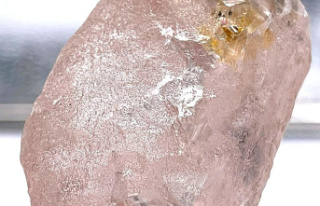Almost exactly 110 years ago the pier in Binz collapsed. Fatalities, but also the founding of the DLRG were the consequences. A new exhibition has compiled the identities of the victims.
Binz (dpa / mv) - 110 years after the dramatic pier accident in Binz on Rügen, a new exhibition presents the identity of many victims. 16 of the 17 people who died as a result of the collapse of the pier on July 28, 1912 could be identified based on historical newspaper reports, said initiator Arndt Schmitz on Thursday of the German Press Agency. A representative of the German Life Saving Society (DLRG) also attended the opening of the exhibition. It was founded a year later in response to the disaster.
110 years ago, up to 1000 people were standing on the more than 500 meter long pier in Binz when the bridgehead collapsed under the load and, according to the exhibition, almost 100 people fell into the Baltic Sea. Many drowned, others later died. Schmitz' grandfather was a survivor of the accident. In his notes he describes the accident, explained his grandson. The exhibition is also dedicated to reports by his great-uncle, who was also a witness at the time.
During the investigations, it was found that many more women than men were among the victims "because they couldn't swim as well and wore long clothes," as Schmitz explains. There was a group of tourists, but also people from Greifswald who wanted to take a steamer back to the Hanseatic city on Sunday evening. One of the most famous victims was a policeman who was supposed to keep order on the pier where passenger ships docked. He was dragged into the water while carrying out his duties.
A memorial stone in Binz commemorates the accident. According to Schmitz, the spa administration puts up a bouquet of flowers there for the anniversaries. The exhibition can be seen in the Binz Museum, in the Raging Roland train station.












